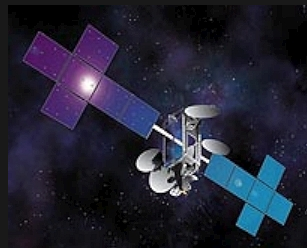[SatNews] The knowledge gained from its successful operation will continue to contribute to the Air Force's space modernization initiatives for years to come.
Following 27 months of successful operation, during which all mission objectives were met, the Space and Missile Systems Center decommissioned the Commercially Hosted Infrared Payload (CHIRP) December 6, 2013.

An experimental CHIRP sensor is hosted on a commercial SES satellite operating in geosynchronous orbit over the United States.
The CHIRP sensor, designed and built by Leidos (formerly Science Applications International Corporation), was successfully launched September 21, 2011, as a hosted payload on an SES commercial communications satellite built by the Orbital Sciences Corporation. CHIRP was designed for a one-year mission life. The payload completed its initial demonstration period in July 2012, and the contract was extended three times to conduct additional demonstrations employing wide field-of-view staring technology.
During the 27 months of operations, the CHIRP system accomplished all objectives by collecting over 300 terabytes of Overhead Persistent Infrared (OPIR) data, enabling analysis of more than 70 missile- and rocket-launch events and more than 150 other infrared events. CHIRP mission products stimulated new applications of OPIR data by defense and civil users. Given the successful accomplishment of the project's mission objectives, and increasing budgetary constraints, the Air Force chose not to extend the
current contract period.
"CHIRP proved the viability of commercially hosted OPIR payloads, and gave us tremendous insights into the applicability of wide field-of-view staring technology to our missile warning, missile defense, technical intelligence, and battlespace awareness missions," said Lt. Gen. Ellen Pawlikowski, SMC commander. "The sensor's ability to provide continuous coverage within the field-of-view proved to be particularly valuable in understanding short duration infrared events. The knowledge gained from its successful operation will continue to contribute to the Air Force's space modernization initiatives for years to come."
The CHIRP demonstration team was led by the Infrared Space Systems Directorate at the U.S. Air Force Space and Missile Systems Center, Los
Angeles Air Force Base, California.

